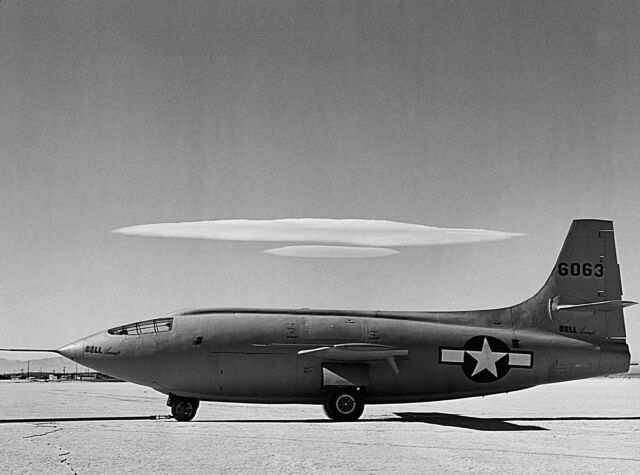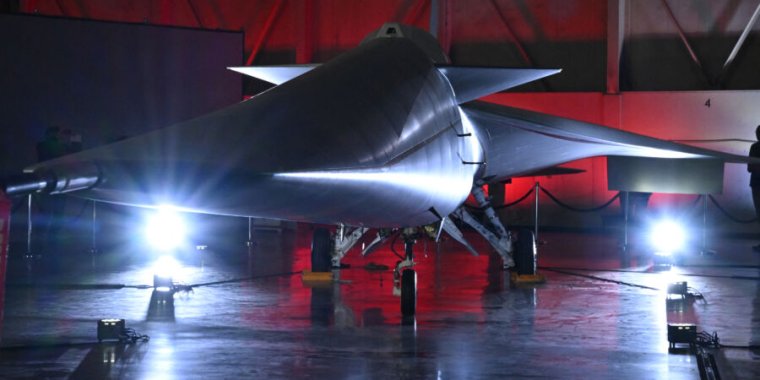[
Robyn Beck/AFP via Getty Images
When Chuck Yeager reached Mach 1 on October 14, 1947, the entire frame of his Bell X-1 aircraft suddenly started to shake, and the controls went. A crew observing the flight in a van on the ground reported hearing something like a distant, rolling thunder. They were probably the first people on Earth to hear a boom made by a supersonic aircraft.
The boom felt like an innocent curiosity at first but soon turned into a nightmare. In no time, supersonic jets—F-100 Super Sabers, F-101 Voodoos, and B-58 Hustlers—came to Air Force bases across the US, and with them came the booms. Proper, panes-flying-off-the windows supersonic booms. People filed over 40,000 complaints about nuisance and property damage caused by booming jets, which eventually ended up with the Federal Aviation Administration imposing a Mach 1 speed limit for flights over land in 1973.
Now, NASA wants this ban to go. It has started the Quesst mission to go fast over American cities once more. But this time, it wants to do it quietly.
Breaking the sound barrier
The reason Yeager’s X-1 was so difficult to control at Mach 1 was not an actual “sound barrier” the plane broke. The “barrier” aspect is purely metaphorical. While Yeager’s plane experienced turbulence and shaking, it was due to rising drag and aircraft design.
At subsonic speeds, the airflow around the wings, tail, and fuselage is smooth. But at supersonic speeds, the air going over irregular shapes— the nose, canopy, and wings—accelerates to above the speed of sound. Then, where the curvature of the wing or canopy becomes less pronounced, it starts to build up pressure and decelerate back below Mach 1, a phenomenon known as “adverse pressure.” This creates shockwaves, and those are what cause supersonic booms and change the way wings, flaps, and other control surfaces behave in an airplane. The X-1 started acting so wild at Mach 1 because its aerodynamics weren’t designed for supersonic flight.
Lockheed, Bell, McDonell Douglas, and other companies that built early supersonic planes solved the control issues quickly, which made accelerating to Mach speeds pretty uneventful for the pilot. But that left two decades of booming.

Museum of Flight/CORBIS/Corbis via Getty Images
How loud is the boom?
A supersonic jet boom sounds like a thunder strike hitting nearby—a product of the shockwaves generated mainly by the nose and tail of the aircraft. The boom usually falls between 100 and 110 on a perceived level decibel scale (PLdB), which is used to quantify how people experience sound. A car door slam 100 feet away is 60 PLdB; distant thunder, like the one the ground crew heard during Yeager’s first supersonic flight, is around 70 PLdB. A supersonic boom is on par with a nearby thunder strike, which falls at around 105–110 PLdB.
It’s really freaking loud. And you can easily make it even louder.
This 110 PLdB is estimated for an airplane in a steady, level flight at high altitude. These conditions create what’s known as a “carpet boom” that tracks the aircraft on the ground for the entire time it flies supersonic.
Transitions from subsonic to supersonic speeds and vice versa result in so-called “focus booms,” which can be up to three to four times louder than a carpet boom. This likely gave rise to the popular misconception that the boom is heard only when a plane breaks the sound barrier.
Focus booms are also caused by maneuvers like pitch and dive, where an aircraft gains altitude, levels, and flies back down; turns made with aggressive banking angles work as well. Unlike carpet booms, the booms made by transitions and maneuvers are singular events. The military even tested whether those amplified booms could be projected at chosen spots on the ground to weaponize them. As it turned out, you could do targeted booms, but they proved more scary than lethal.
But despite all the problems with booming, the allure of superior speed was irresistible. Supersonic airplanes could cut the time of transatlantic flights by half. So back in the mid-1950s, when the FAA’s Mach 1 speed limit was still many years away, British and French engineers got to the drawing board and conceived one of the most breathtaking airliners to ever pierce the sky: Concorde.







